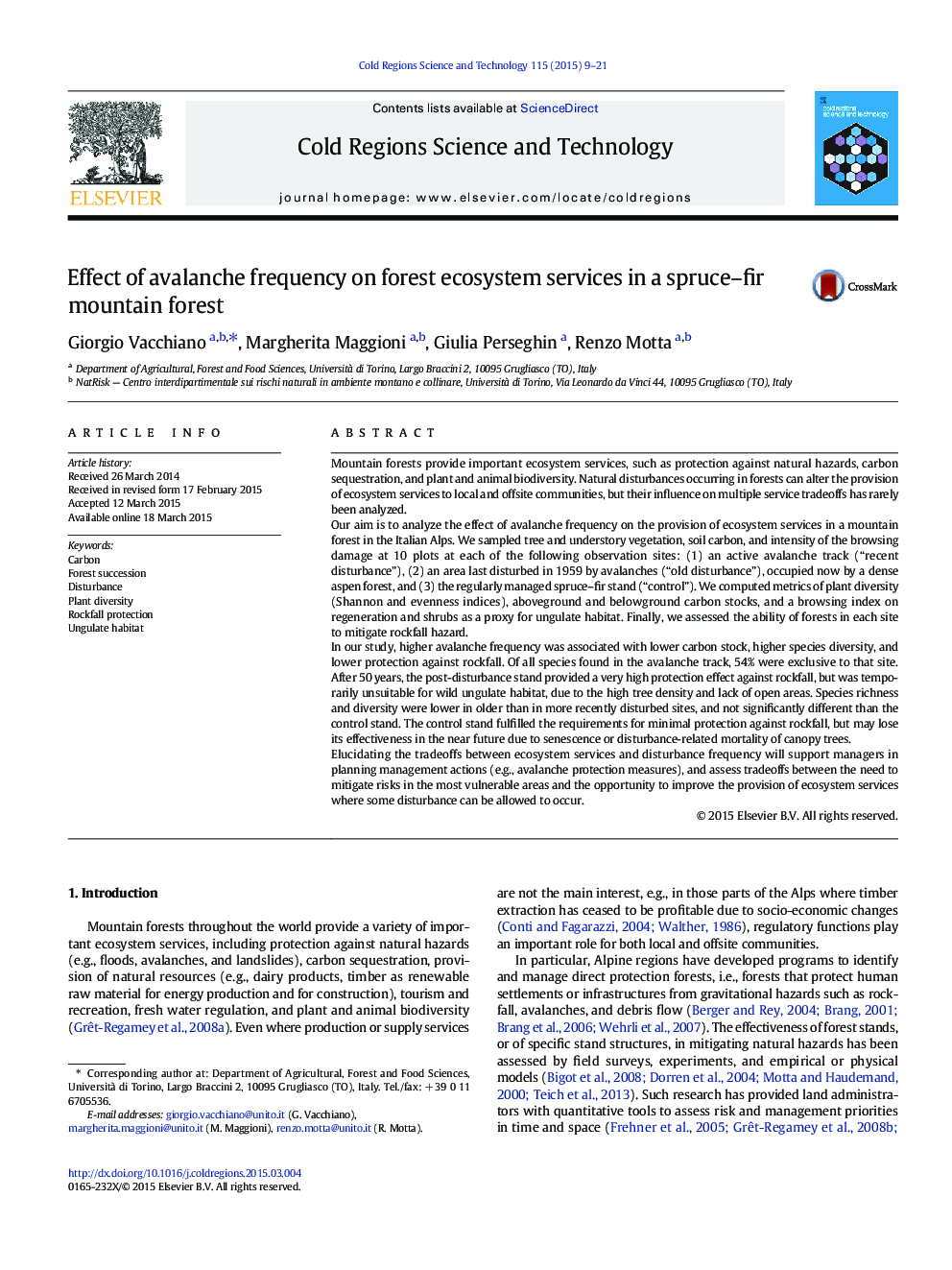| کد مقاله | کد نشریه | سال انتشار | مقاله انگلیسی | نسخه تمام متن |
|---|---|---|---|---|
| 6426836 | 1634449 | 2015 | 13 صفحه PDF | دانلود رایگان |

- We quantified ecosystem services in a spruce-fir forest under variable avalanche frequency.
- The avalanche track had higher plant diversity and lower carbon (C) stocks.
- 50Â years after disturbance, the forest was dominated by aspen, and optimal for rockfall protection.
- Wild ungulates found suitable habitats in the avalanche track and in the control.
- Maintaining avalanche-disturbed areas in the landscape can benefit biodiversity and wildlife habitat.
Mountain forests provide important ecosystem services, such as protection against natural hazards, carbon sequestration, and plant and animal biodiversity. Natural disturbances occurring in forests can alter the provision of ecosystem services to local and offsite communities, but their influence on multiple service tradeoffs has rarely been analyzed.Our aim is to analyze the effect of avalanche frequency on the provision of ecosystem services in a mountain forest in the Italian Alps. We sampled tree and understory vegetation, soil carbon, and intensity of the browsing damage at 10 plots at each of the following observation sites: (1) an active avalanche track (“recent disturbance”), (2) an area last disturbed in 1959 by avalanches (“old disturbance”), occupied now by a dense aspen forest, and (3) the regularly managed spruce-fir stand (“control”). We computed metrics of plant diversity (Shannon and evenness indices), aboveground and belowground carbon stocks, and a browsing index on regeneration and shrubs as a proxy for ungulate habitat. Finally, we assessed the ability of forests in each site to mitigate rockfall hazard.In our study, higher avalanche frequency was associated with lower carbon stock, higher species diversity, and lower protection against rockfall. Of all species found in the avalanche track, 54% were exclusive to that site. After 50Â years, the post-disturbance stand provided a very high protection effect against rockfall, but was temporarily unsuitable for wild ungulate habitat, due to the high tree density and lack of open areas. Species richness and diversity were lower in older than in more recently disturbed sites, and not significantly different than the control stand. The control stand fulfilled the requirements for minimal protection against rockfall, but may lose its effectiveness in the near future due to senescence or disturbance-related mortality of canopy trees.Elucidating the tradeoffs between ecosystem services and disturbance frequency will support managers in planning management actions (e.g., avalanche protection measures), and assess tradeoffs between the need to mitigate risks in the most vulnerable areas and the opportunity to improve the provision of ecosystem services where some disturbance can be allowed to occur.
Journal: Cold Regions Science and Technology - Volume 115, July 2015, Pages 9-21